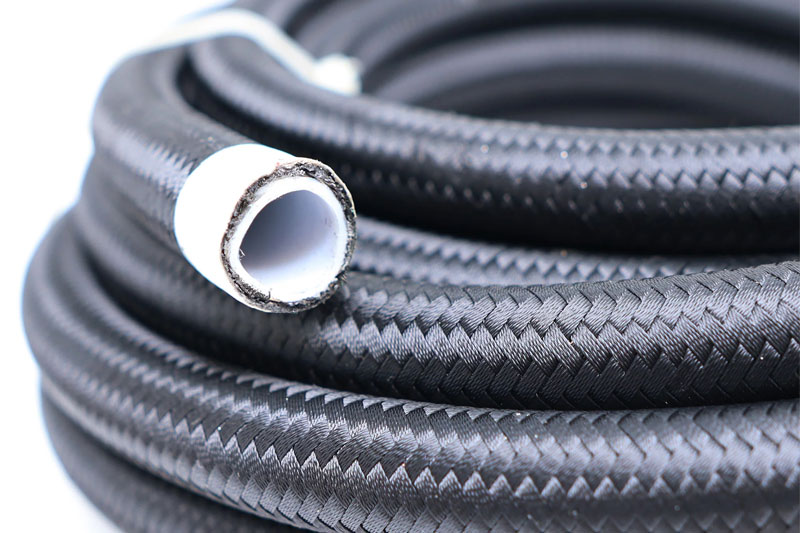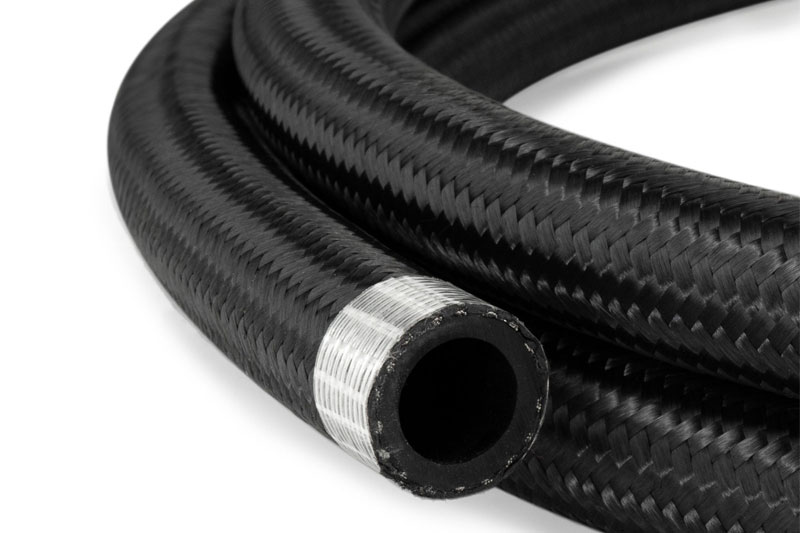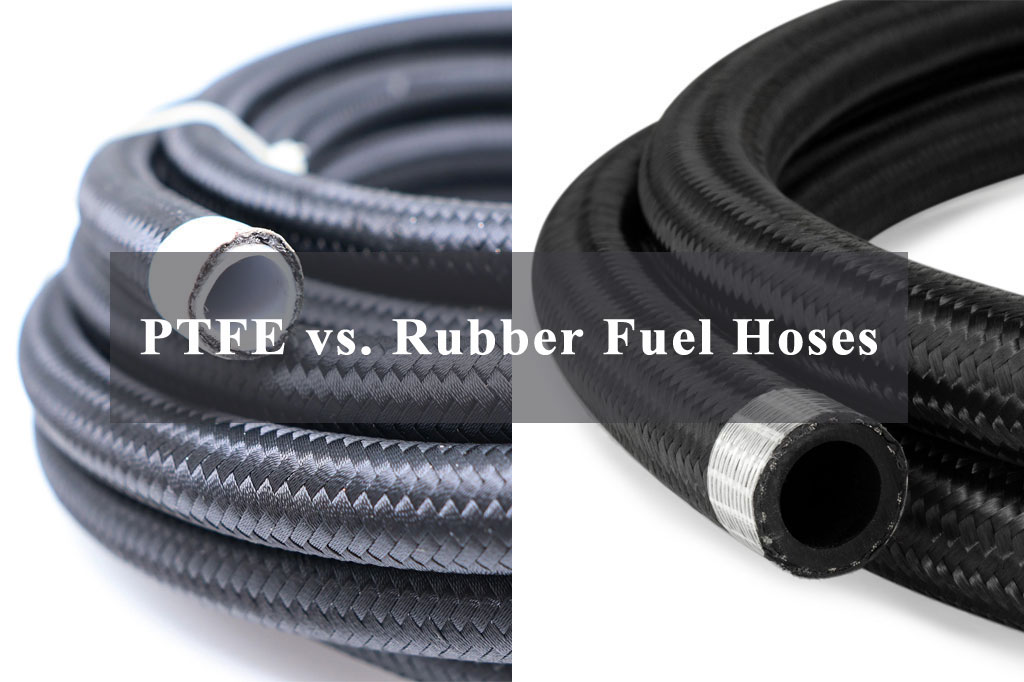Fuel hoses play a critical role in the performance, safety, and efficiency of automotive systems. They carry gasoline, diesel, or other fuels from the tank to the engine while withstanding pressure, temperature fluctuations, and exposure to chemicals.
Traditionally, rubber fuel hoses have been the go-to choice for most vehicles. However, PTFE fuel hoses have gained significant popularity in performance and specialized automotive applications due to their unique properties.
If you’re wondering whether PTFE or rubber fuel hoses are better suited for your needs, this article compares the two in terms of durability, chemical resistance, flexibility, installation, cost, and typical use cases.
Understanding PTFE Fuel Hoses

PTFE fuel hoses often come with a braided stainless-steel or nylon outer layer, which provides added strength and protection. They are commonly used in motorsports, aviation, and high-performance vehicles, where strength and reliability are crucial.
Key Features of PTFE Fuel Hoses:
- Resistant to virtually all automotive fuels, oils, and additives.
- Operates under a wide temperature range, typically from -70°C to 260°C.
- Non-permeable, preventing fuel vapors from escaping.
- Available in multiple braid options for enhanced pressure resistance.
Understanding Rubber Fuel Hoses

Rubber fuel hoses are reinforced with textile braids to handle pressure and are widely used in OEM automotive systems. Rubber hoses remain a cost-effective and versatile solution for most standard vehicles.
Key Features of Rubber Fuel Hoses:
- Designed to be flexible, they can be routed easily around engine components.
- Effective at handling moderate temperatures and pressures.
- Widely available and cost-efficient.
- Typically rated for use with gasoline, diesel, and ethanol blends.
A Quick Comparison Chart
| Feature | PTFE Fuel Hoses | Rubber Fuel Hoses |
|---|---|---|
| Durability & Longevity | Extremely long-lasting; resists cracking and hardening | Moderate; prone to cracking and degradation over time |
| Chemical Resistance | Resistant to all fuels, oils, additives, and ethanol blends | Resistant to most fuels, but ethanol can cause swelling and softening |
| Temperature Tolerance | -70°C to 260°C; excellent for extreme conditions | -30°C to 120°C; may degrade under high heat |
| Flexibility & Installation | Stiffer, harder to route; requires specialized tools for fittings | Highly flexible; easy to install and replace |
| Vapor Permeability | Non-permeable; prevents fuel vapor loss | Slightly permeable; some vapor may escape |
| Pressure Handling | Can handle extremely high pressures; ideal for fuel injection and racing | Suitable for low to medium pressures; limited for high-pressure applications |
| Cost | Higher; specialized materials and fittings required | Lower; widely available and cost-effective |
| Typical Applications | High-performance cars, racing, aviation, ethanol-fueled systems | Everyday passenger vehicles, motorcycles, light-duty trucks |
A Detailed Comparison Between PTFE and Rubber Fuel Hoses
1. Durability and Longevity
- PTFE: Known for its exceptional lifespan, PTFE hoses can last decades if properly installed. They resist hardening, cracking, or degradation even under extreme heat and chemical exposure.
- Rubber: Rubber hoses naturally degrade over time. They can harden, crack, or become brittle, especially when exposed to ethanol-blended fuels or high engine bay temperatures. Replacement intervals are typically shorter.
Winner: PTFE
2. Chemical Resistance
- PTFE: Virtually inert, PTFE hoses resist all fuels, oils, coolants, and additives, including aggressive ethanol blends (E85). This makes them ideal for modern fuels that can attack rubber.
- Rubber: While resistant to many fuels, rubber hoses are vulnerable to ethanol, which can cause swelling, softening, and eventual failure.
Winner: PTFE
3. Temperature Tolerance
- PTFE: With an operating range from -70°C to 260°C, PTFE easily withstands under-hood heat and cold weather conditions without losing flexibility or performance.
- Rubber: Rubber hoses generally operate between -30°C and 120°C. Extended exposure to high heat may cause them to soften or crack.
Winner: PTFE
4. Flexibility and Installation
- PTFE: Stiffer than rubber, PTFE hoses can be harder to route in tight spaces. The braided outer layer also makes cutting and assembling fittings more challenging, often requiring specialized tools.
- Rubber: Extremely flexible and easy to install, rubber hoses are user-friendly for DIY mechanics and technicians alike.
Winner: Rubber
5. Vapor Permeability
- PTFE: Completely non-permeable, PTFE hoses eliminate fuel vapor loss, which improves safety and reduces emissions. This makes them ideal for compliance with strict environmental regulations.
- Rubber: Rubber hoses can be slightly permeable, allowing some vapors to escape. Modern low-permeation rubber hoses exist but still fall short of PTFE’s barrier properties.
Winner: PTFE
6. Pressure Handling
- PTFE: Reinforced PTFE hoses can handle extremely high pressures, making them suitable for fuel injection systems, racing, and forced induction setups.
- Rubber: Adequate for low to medium-pressure applications such as carbureted systems. However, they may not be reliable under sustained high pressures.
Winner: PTFE
7. Cost
- PTFE: Generally more expensive due to the material itself and the stainless-steel or nylon braiding required. Installation costs may also be higher if specialized fittings are used.
- Rubber: More affordable and readily available, they are a practical option for cost-conscious vehicle owners.
Winner: Rubber
Typical Applications
- PTFE Fuel Hoses: Common in high-performance cars, racing vehicles, aviation, and applications requiring long service life and resistance to harsh fuels. Perfect for modern engines running on ethanol-based fuels and for systems with high-pressure or extreme temperature demands.
- Rubber Fuel Hoses: Typically found in passenger cars, motorcycles, and light-duty trucks. Ideal for cost-effective repairs, moderate-performance systems, and applications where extreme durability is not critical.
Which Should You Choose?
The decision between PTFE and rubber fuel hoses largely depends on your automotive application:
Choose PTFE Fuel Hoses if:
- You’re running a high-performance or racing engine.
- Your system uses ethanol-blended or aggressive fuels.
- You need maximum durability and resistance to heat and pressure.
- You want a hose that will last the lifetime of the vehicle.
Choose Rubber Fuel Hoses if:
- You’re maintaining a daily driver or standard vehicle.
- Budget is a primary concern.
- You want a hose that’s easy to install and replace.
- Your application involves moderate pressure and temperature conditions.

